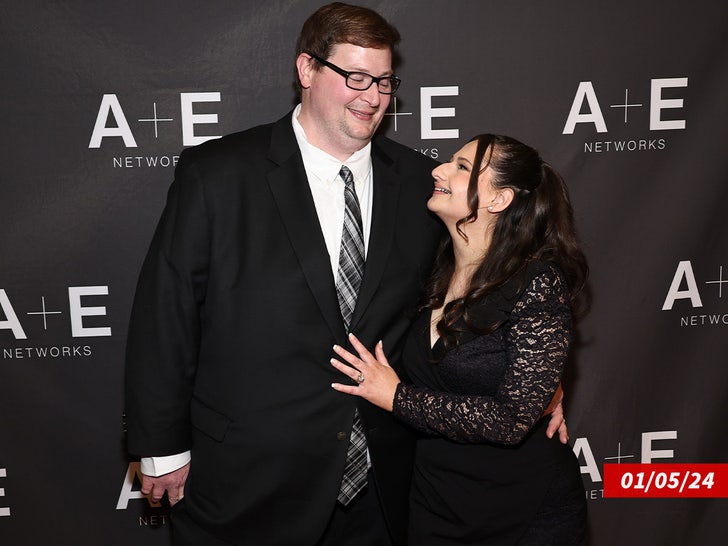Lifestyle
PEN America ceremony canceled due to protest, Tony Kushner will donate prize money

Playwright Ayad Akhtar on stage at the 2023 PEN America Literary Awards in his role as then-president of the organization.
Beowulf Sheehan/PEN America
hide caption
toggle caption
Beowulf Sheehan/PEN America

Playwright Ayad Akhtar on stage at the 2023 PEN America Literary Awards in his role as then-president of the organization.
Beowulf Sheehan/PEN America
This story has been updated.
Playwright and screenwriter Tony Kushner tells NPR he will donate the $25,000 purse that comes with the PEN/Mike Nichols Writing for Performance Award, for which he is this year’s recipient.
In an email, the Pulitzer Prize, Tony and Emmy-winning writer said that when he receives the award, “I will donate half the money to Jewish Voice for Peace and half to UNRWA, earmarked for relief work in Gaza.” Kushner is a member of the Jewish Voice for Peace advisory board.
Kushner is one of many artists who’ve called for a ceasefire in Gaza. In an interview with the Haaretz Podcast in March, he said, “If you had asked me, even on October 7, would Israel allow, 30,000 people, many of them civilians, to be killed by the IDF I would have said no.”
The Israel-Hamas war has killed over 34,000 Palestinians, according to health officials in Gaza. Israel invaded Gaza in response to an attack by the militant organization Hamas on Oct. 7 that killed around 1,200 people, mostly civilians.
A production of Kushner’s Angels in America is currently on stage in Tel Aviv. He also co-wrote the screenplay for Steven Spielberg’s Munich which is getting renewed attention in light of Israel’s war with Hamas.
“In both his art and activism, Tony Kushner compels us to confront uncomfortable truths about the 21st century,” PEN America wrote in its announcement, “helping us feel our way towards a better future and aspire toward a more just and compassionate world.”
The PEN/Mike Nichols honor is one of PEN America’s career achievement awards. “The winner is selected by an internal, anonymous judging panel,” according to the organization.
PEN America literary awards ceremony canceled
PEN America canceled its annual literary awards ceremony after nearly half of the writers and translators nominated withdrew their books from consideration.
The awards will still be granted to those who did not withdraw, though the ceremony, which was scheduled for Monday, April 29 in New York, will not go on. Writer and comedian Jena Friedman had been lined up to host the event.
An open letter signed by a number of writers to PEN America’s leadership reads, “We reject these honors conferred by your organization in protest of your failure to confront the genocide in Gaza.”
They contend that PEN America was slow to denounce “the incomparable loss of Palestinian life” and that when the organization finally did, its statement lacked “proportional empathy.”
“We greatly respect that writers have followed their consciences, whether they chose to remain as nominees in their respective categories or not,” said Clarisse Rosaz Shariyf, PEN America’s head of literary programming, in a statement. “As an organization dedicated to freedom of expression and writers, our commitment to recognizing and honoring outstanding authors and the literary community is steadfast.”
In February, Palestinian-American writer Randa Jarrar was dragged out of a PEN America event in Los Angeles after she and other writers used a portable speaker to play the names of writers and poets killed in Gaza. The event featured actor Mayim Bialik, who has supported Israel on social media.
The PEN America awards come with different-sized cash prizes. The foundation behind the PEN/Jean Stein Book Award said that Stein was a “passionate advocate for Palestinian rights” and said that it had directed PEN to donate the unawarded $75,000 to the Palestine Children’s Relief Fund.
PEN said that winners who did not withdraw from consideration will receive their cash prizes, including playwright and screenwriter Tony Kushner, who will be honored with the PEN/Mike Nichols Writing for Performance Award.
This story was edited by Jennifer Vanasco.

Lifestyle
In 'The Fall Guy,' stunts finally get the spotlight

Ryan Gosling plays stunt man Colt Seavers in the new movie The Fall Guy, a new take on the 1980s TV show.
Eric Laciste/Universal Pictures
hide caption
toggle caption
Eric Laciste/Universal Pictures

Ryan Gosling plays stunt man Colt Seavers in the new movie The Fall Guy, a new take on the 1980s TV show.
Eric Laciste/Universal Pictures
At the Hollywood premiere of the new movie The Fall Guy, motorcyclists popped wheelies along the red carpet, one stuntman took a dive off a 45-foot crane outside the Dolby Theater, and Ryan Gosling’s stunt doubles were ripped backwards through a movie poster. Three performers smashed through a window for a lively staged fight scene.
The movie’s storyline and its massive global marketing campaign are all about giving credit to Hollywood’s behind-the-scenes action stars. In every appearance, Gosling lavishes praise, noting he’s had a stunt double since his 1990’s TV show Young Hercules.
“I kind of had a stunt double my whole life,” he explained at the premiere at South By Southwest. “It’s always been this strange dynamic where they come and do all the cool stuff and then they go and hide, and you pretend that you did it. And it’s not cool…it’s about time that we recognize that they’ve been making actors into movie stars for a century.”

A stunt performer at the Los Angeles premiere of The Fall Guy. Outside the Dolby Theatre, another stunt artist jumped from atop a 45-foot crane, while others showed off a staged fight scene.
Valerie Macon/AFP via Getty Images
hide caption
toggle caption
Valerie Macon/AFP via Getty Images

A stunt performer at the Los Angeles premiere of The Fall Guy. Outside the Dolby Theatre, another stunt artist jumped from atop a 45-foot crane, while others showed off a staged fight scene.
Valerie Macon/AFP via Getty Images
The Fall Guy is an action movie within an action movie: In the film, Ryan Gosling plays Colt Seavers, a stunt man trying to win back his film director ex, played by Emily Blunt. When the movie star for whom he doubles goes missing, Seavers is sent on a mission to find him.
Gosling did a few of his own stunts for the movie, including falling backwards 12 stories from a building. He did a fight scene inside a garbage bin spinning through the streets, and he surfed on a metal plate dragged by a truck on the Sydney Harbour bridge.
But Gosling’s stunt doubles did even more daring tricks.

“I got pulled back maybe 20 feet into a massive rock while on fire,” recalls Ben Jenkin, a parkour specialist who stood in for Gosling’s character as he was set on fire over and over. “I did the ‘fire burn’ eight times in one day. That was actually one of the ones that hurt the least.”
Throughout production, Jenkin took more than a few punches.
“The car hit wasn’t fun,” he told NPR. “I mean, it was fun to do, but the pain! It definitely hurt my leg a little bit when I smashed through the front windshield and landed on the road. That was a thumper. You watch the movie and you see the stunts and you’re like, ‘Oh my god, that’s crazy. That must have hurt.’ But you don’t see the prep that went into it.”

The new movie The Fall Guy is an update of the 1980’s action TV show of the same name starring Lee Majors, shown here in 1981. Majors makes a cameo in the new movie.
Walt Disney Television Photo Archives/Getty Images
hide caption
toggle caption
Walt Disney Television Photo Archives/Getty Images

The new movie The Fall Guy is an update of the 1980’s action TV show of the same name starring Lee Majors, shown here in 1981. Majors makes a cameo in the new movie.
Walt Disney Television Photo Archives/Getty Images
Pulling back the curtain on stunts
The movie was directed by former stuntman David Leitch, who spent 20 years doubling for A-list actors like Brad Pitt and Matt Damon before making such action films as Atomic Blonde, Bullet Train, John Wick and a Fast and Furious spinoff.
For The Fall Guy, Leitch says he wanted all the stunts to be old school and practical — using real people, not AI or CGI.
“We did high falls out of helicopters. We lit people on fire multiple times,” Leitch told NPR. “Cars flipping, crashing, fight scenes, bottles broken. A lot of stunts. We really put everything into it. Honestly, we knew we had to make sure we did right by the stunt community.”
Posing as Gosling’s character in the movie, aerialist Troy Brown took a backwards 150-foot fall out of a helicopter to land onto the same airbag his legendary stuntman father Bob Brown once landed on for a movie.
Stunt driver Logan Holladay jumped a truck over a 225 foot-wide canyon. And for another scene, he broke a Guinness World Record. Driving 80 miles per hour on a wet, sandy Australian beach, Holladay maneuvered a modified Jeep Grand Cherokee. A blast from an air cannon under the SUV propelled it to roll over itself eight and a half times. (The previous record for cannon rolls in a car was seven, held by Adam Kirley for the 2006 James Bond film Casino Royale.)

Ryan Gosling, Aaron Taylor-Johnson, Ben Jenkin, Logan Holladay, and Justin Eaton, along with director David Leitch on set.
Eric Laciste/Universal Pictures
hide caption
toggle caption
Eric Laciste/Universal Pictures

Ryan Gosling, Aaron Taylor-Johnson, Ben Jenkin, Logan Holladay, and Justin Eaton, along with director David Leitch on set.
Eric Laciste/Universal Pictures
“Logan gets out of the car and gives us the thumbs up, and we know he’s okay,” recalls the movie’s stunt designer, Chris O’Hara. He and his team had carefully calculated the density of the sand and the speed.
“It’s definitely a science,” he told NPR. “It’s not just, you know, go crash a car; We’re really doing our due diligence to make it the perception of danger while eliminating all the risks so that in the end, we can make something super exciting.”
David Leitch says all of the stunts in the movie are also there to serve the story. “There’s a lot of math, there’s a lot of physics, there’s a lot of physicality and performance,” he says. “But there’s also this artistic design and creativity. Like, how is this sequence going to move the character forward? How is this sequence going to be more fun? How are we going to make them laugh? How are we going to make them be scared?”

Emily Blunt plays Judy Moreno in The Fall Guy.
Eric Laciste/Universal Pictures
hide caption
toggle caption
Eric Laciste/Universal Pictures

Emily Blunt plays Judy Moreno in The Fall Guy.
Eric Laciste/Universal Pictures
Campaigning for an Oscars category
Unlike costume designers, hair and makeup designers, and soon, casting directors, the Academy Awards have never had a category for stunts. But The Fall Guy stars Gosling and Blunt made a pitch for one at this year’s Oscars ceremony.
“To the stunt performers and the stunt coordinators who help make movies magic,” Gosling said onstage, “we salute you.”
That support is appreciated by stunt performers like Michelle Lee, who doubles for Rosario Dawson in the Star Wars spinoff series Ahsoka. She hopes this effort helps people understand discipline and sacrifices stunt performers make to entertain audiences. “Sometimes, you pad up and you’re like, ‘Oh, this one’s going to hurt,’ but this is what I’m here for and I’ve practiced,” she says. “You know, pain is temporary, film is forever. You have that cool shot forever.”
Mike Chat and Neraida Bega train Hollywood stunt performers at a center run by 87 North, the production company run by The Fall Guy director David Leitch and his producer wife Kelly McCormick. They say that for years, stunt performers have campaigned for the Academy to honor their work.
“People have petitioned, they’ve gone out and picketed,” says Chat. But that didn’t work, says Bega.
“The fear was that people were going to make the stunts more dangerous and bigger and bigger for them to win. But that is not the goal,” Bega says. “There is so much discipline, they work so hard and they have to be always ready.”
Chat has been in the business for more than 20 years. He and others hope The Fall Guy may finally convince the Academy to award an Oscar for best stunts.
“They have taken the initiative to say, ‘OK, we’re going to educate you, we’re going to earn it, we’re gonna prove it and show you why it’s deserved.’”
And for that effort, he says the stunt community around the world is giving The Fall Guy a big thumbs up.
Lifestyle
Gypsy Rose Gave Wedding Ring Back to Estranged Husband, Family Heirloom

Gypsy Rose Blanchard has already given back her wedding ring to estranged husband Ryan Anderson … because the piece of jewelry meant quite a bit to him, TMZ has learned.
Sources close to Gypsy Rose tell TMZ … she felt it was the right thing to give back the ring — as it was a family heirloom given to Ryan by his mom. We’re told Gypsy Rose left the ring with Ryan when she made the decision to end her marriage … along with an apology note next to their bed on March 22.

The note read … “I’m sorry, you and I deserve happiness.”
BTW … legally speaking, she didn’t have to return the ring. Once they tied the knot, it was hers unconditionally.
As Ryan explained on ‘Life After Lock Up’ … he snuck the jewelry into the prison where Gypsy Rose was doing time for her role in the murder of her mom, Dee Dee Blanchard.

Remember, Gypsy Rose and Ryan first connected after he wrote her a letter. They fell in love … marrying in a prison ceremony in July 2022.
GRB and Ryan’s relationship deteriorated in the months after Gypsy’s release from prison. She announced her decision to separate in March … filing for divorce not long after.
Gypsy Rose has already moved on to a new relationship … confirming a romantic reunion with ex-fiancé Ken Urker with a kissing selfie.

Sources tell us the relationship is moving fast … as Ken is planning to move from Texas to Louisiana in June to be closer to Gypsy Rose.
Yet, as Gypsy Rose told a photog this week, she and Ken aren’t talking about marriage … yet!!!
Lifestyle
Renowned painter and pioneer of minimalism Frank Stella dies at 87

Frank Stella with one of his works at the Royal Academy’s Summer Exhibition in London in 2000.
Ian Nicholson/PA Images via Getty Images
hide caption
toggle caption
Ian Nicholson/PA Images via Getty Images

Frank Stella with one of his works at the Royal Academy’s Summer Exhibition in London in 2000.
Ian Nicholson/PA Images via Getty Images
Renowned minimalist painter Frank Stella died Saturday of lymphoma at his home in Manhattan, N.Y. The artist was 87 years old.
Stella’s representative, Marianne Boesky Gallery in New York, confirmed the news with NPR.
“Marianne Boesky began representing Stella in 2014, and the gallery is deeply grateful for a decade of collaboration with the artist and his studio,” Boesky said in a statement shared with NPR. “It has been a great honor to work with Frank for this past decade. His is a remarkable legacy, and he will be missed.”
One of the most influential American artists of his time, Stella was a pioneer of the minimalist movement of the early 1960s. During that time, painters and sculptors challenged the idea that art was meant to be representative and used their medium as their message.

Instead of representing three-dimensional worlds through the canvas, some of Stella’s early artworks reflected his desire to have an immediate visual impact upon viewers. A series titled Black Paintings used parallel black stripes to prompt awareness of the painting as a two-dimensional surface. As Stella once gnomically stated, “What you see is what you see.”

Stella’s Die Fahne hoch! (1959) is part of a series of paintings that earned the artist notoriety in the 1950s.
2015 Frank Stella/Artists Rights Society (ARS), New York. Digital Image
hide caption
toggle caption
2015 Frank Stella/Artists Rights Society (ARS), New York. Digital Image

Stella’s Die Fahne hoch! (1959) is part of a series of paintings that earned the artist notoriety in the 1950s.
2015 Frank Stella/Artists Rights Society (ARS), New York. Digital Image
“It was about being able to make an abstract painting that really wasn’t based on anything but the gesture of making itself, which was the gesture of making the painting,” Stella Terry Gross in a Fresh Air interview in 2000.
Frank Stella was born into a middle-class Italian American family. His father was a gynecologist who painted houses during the Great Depression and his mother was a housewife and artist. Young Stella grew up surrounded by paint; amongst his mother’s artworks and helping his father whenever he repainted his own home. “I always liked paint,” he told Gross, “the physicality of it.”
He started exploring paint more professionally when he was in high school in Massachusetts under the supervision of abstractionist painter Patrick Morgan, who taught there. Even while studying history as a Princeton undergraduate, Stella continued taking art classes. Through his Ivy League connections, Stella was introduced to the art world of New York City, which started to shape his early artistic vision as he encountered artists such as Jackson Pollock and Franz Kline, who would become some of his most admired influences.
“I really wanted more than anything to make art that was as good as the good artists were making. I wanted to make art that someday — and I didn’t expect it to be that way right away — that it would be as good as [Willem] de Kooning or Kline or [Barnett] Newman or Pollock or [Mark] Rothko. They were my heroes and I wanted to make art that was as good as them,” he told Fresh Air.

A 2014 sculpture by Frank Stella entitled Inflated Star and Wooden Star in the courtyard at the Royal Academy of Arts on Feb. 18, 2015, in London.
Ben Stansall/AFP via Getty Images
hide caption
toggle caption
Ben Stansall/AFP via Getty Images

A 2014 sculpture by Frank Stella entitled Inflated Star and Wooden Star in the courtyard at the Royal Academy of Arts on Feb. 18, 2015, in London.
Ben Stansall/AFP via Getty Images
When Stella was only 23, he made his debut at New York’s Museum of Modern Art. And soon after his series Black Paintings, which he started in 1958, Stella created two more series, Aluminum Paintings (1960) and Copper Paintings (1960-61), that committed to the idea that the art was in the medium and was, as he told The Guardian in 2015, supposed to be “fairly straightforward.”
In 1970, when he was 33 years old, Stella became the youngest artist ever to receive a retrospective at New York’s Museum of Modern Art. His exhibition covered a decade of his drawings and paintings and emphasized his originality in simplicity.
In the 1990s, Stella’s work evolved from the canvas to colorful geometrical configurations and sculptures. He started using computer technology and architectural rendering to incorporate digital images into his work. His Moby Dick series, a set of paintings, lithographs, and sculptures, took their titles from chapters of Herman Melville’s classic novel. According to the Princeton University Art Museum, the series was Stella’s “most ambitious artistic endeavor … [that] pushes the boundaries between printmaking, painting, and sculpture.”

Visitors walk past the installation The Honor and Glory of Whaling (1991) by Frank Stella in the Folkwang Museum in Essen, Germany, in 2010.
Volker Hartmann/DDP/AFP via Getty Images
hide caption
toggle caption
Volker Hartmann/DDP/AFP via Getty Images

Visitors walk past the installation The Honor and Glory of Whaling (1991) by Frank Stella in the Folkwang Museum in Essen, Germany, in 2010.
Volker Hartmann/DDP/AFP via Getty Images
A straightforward, rather blunt artist, Stella never really cared about what others thought of him — or of his art. But his six-decade career inspired generations of artists, including painter Julie Mehretu. “Once I really started to understand his work and follow it, there’s a certain type of invention and playfulness and extreme rigor with which he kept going forward,” she said in a 2015 NPR interview.
Stella’s numerous awards and accolades included the National Medal of Arts, the country’s highest honor for artistic excellence, in 2009, and the 2011 Lifetime Achievement in Contemporary Sculpture Award from the International Sculpture Center.
-

 News1 week ago
News1 week agoFirst cargo ship passes through new channel since Baltimore bridge collapse
-

 World1 week ago
World1 week agoHaiti Prime Minister Ariel Henry resigns, transitional council takes power
-

 Movie Reviews1 week ago
Movie Reviews1 week agoAbigail Movie Review: When pirouettes turn perilous
-

 World1 week ago
World1 week agoEU Parliament leaders recall term's highs and lows at last sitting
-

 Politics1 week ago
Politics1 week ago911 call transcript details Democratic Minnesota state senator’s alleged burglary at stepmother's home
-

 Politics1 week ago
Politics1 week agoGOP lawmakers demand major donors pull funding from Columbia over 'antisemitic incidents'
-

 Science1 week ago
Science1 week agoOpinion: America's 'big glass' dominance hangs on the fate of two powerful new telescopes
-

 World1 week ago
World1 week agoHamas ‘serious’ about captives’ release but not without Gaza ceasefire















